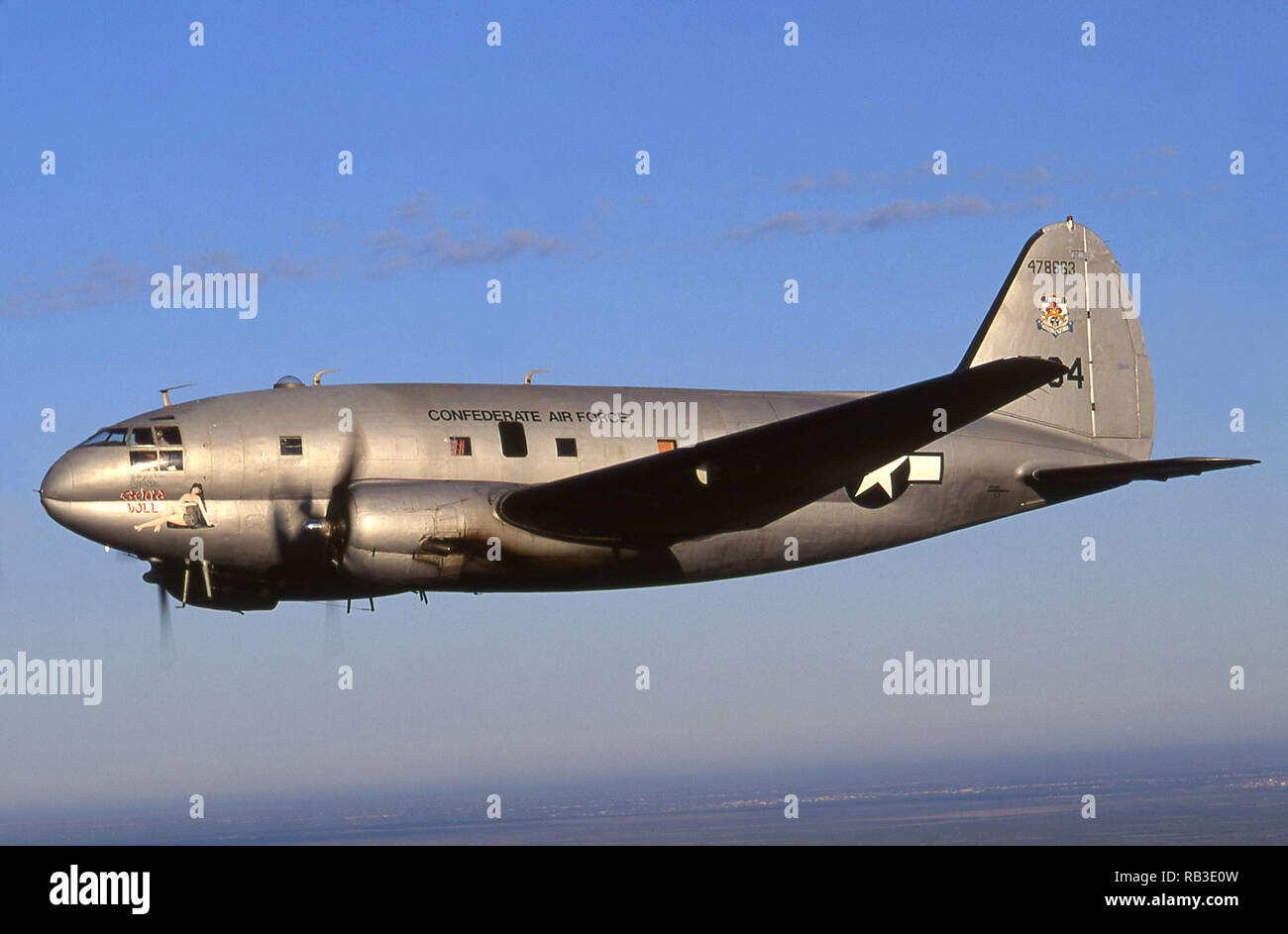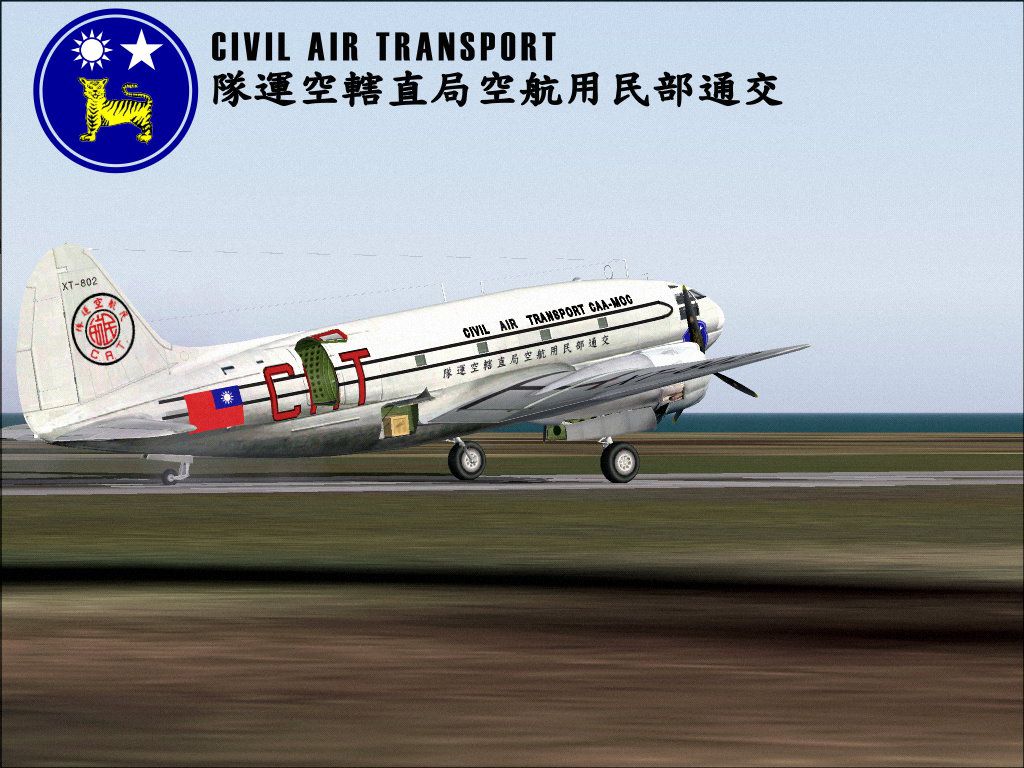C 46 Transport Aircraft - The Curtiss C-46 Commando was originally designed as a twin-engine high-altitude aircraft for civilian use, but was used primarily as a military transport by the United States Army Air Force and Navy during World War II. and the United States Marine Corps, the latter two designated R5C. Those who flew it also gave the Commando the nicknames "La Ballena" ("The Whale") or "La calamidad Curtiss" ("The Curtiss Crash").
Although not as popular or as widely produced as the twin-engine C-47 Skytrain, it surpassed the Douglas model in terms of its greater power, range, and payload, qualities valued especially in the theater of war in Asia.
C 46 Transport Aircraft

The CW-20 prototype, a 36-seat commercial airliner built by Curtiss-Wright, made its first flight on March 26, 1940. Its large fuselage capacity made it particularly suitable for cargo/transport and casualty evacuation missions. , caught the interest of the US Army, which under the name C-46 ordered a militarized version equipped with a 2,000 hp Pratt & Whitney R-2800-43 engine, which it named Commando. In July 1942, the first CW-20B entered service, becoming the largest and most powerful aircraft in USAAF service and proving so valuable in the Pacific theater that more than 3,000 aircraft were built by the end of production.
Aircraft Photo Of C Gixz
Overall, the C-46 model closely resembled the CW-20 prototype, except that it had a different engine and fewer windows. Another model, the C-46A, had a rear left fuselage door, a reinforced hold floor and folding seats for 40 men; The C-46's R-2800-43 engine was replaced by the Pratt & Whitney R-2800-51 of equal power but with superior high-altitude performance.
After the loss of the Burma Road, C-46As, carrying vital supplies from India over the Himalayas to China, played a very important role in transporting military equipment into Chinese territory and contributed greatly to the company's success, which far exceeded the performance of the Douglas C-47 at these altitudes.
In the Pacific, the Commando played an important role in the operations that ended in the defeat of the Japanese. One hundred and seventy US Army R5C-1s (similar to USAAF C-46As) made a significant contribution to these. Other variants produced for the USAAF included the C-46D (CW-20B-2) model used as a personnel carrier with an additional port door (1610 built); Utility version of C-46E (CW-20B-3) with same door arrangement as C-46A and XC-46B (17 built) hard windshield; C-46F (CW-20B-4), a cargo aircraft with doors on both sides and square wingtips, and an example of the C-46G (CW-20B-5) which combined a calendered windshield and square wingtips. The Commando continued to serve in the USAAF/USAF and USMC after World War II. The USAF used the C-46 in the Korean War and the early stages of the Vietnam War. A very small number continued in service for several years.
A few surplus C-46s were used for a while in their original aircraft role, but the large number of surplus C-47s available soon converted the C-46 to cargo roles. . It continued to serve in secondary roles with the United States Air Force until it was finally withdrawn in 1968. However, it continued to be used as a heavy freighter operating over poorly prepared runways and its service life was extended into the 21st century.
Airplanes Texaco Curtiss C 46 Commando
"St. Louis", BOAC CW-20A at Gibraltar, 1941-42. It had previously been a C-55 with Curtiss and the USAAC, after being converted from two CW-20T derivatives.
An original commercial aircraft prototype equipped with biplane and tailplane tail fins and powered by two 1,268 kW (1,700 hp) Wright R-2600 Twin Cyclone radial engines.
A modification of the original CW-20T prototype, a redesigned tail with a large fin and rudder, and a horizontal dihedral tailplane and other improvements, including a change to the Pratt & Whitney R-2800-5 radial engine. It was used as a prototype for the C-46 military transport, also designated the XC-46. Later sold to BOAC.

Twin-engine military transport aircraft powered by two Pratt & Whitney R-2800-43 2,000 hp (1,419 kW) radial engines.
Curtiss C 46 Commando Sound Effects
Twin-engine military transport aircraft powered by two 1,419 kW (2,000 hp) Pratt & Whitney R-2800-51 radial engines, equipped with a larger cargo hatch on the left side of the fuselage, reinforced cargo floor, hydraulic winch and folding seat for in 40 troops.
C-46A used for development testing; Converted to C-46 after testing completed.
A C-46A was converted into a test aircraft to test a heated windshield, powered by two 1,567 kW (2,100 hp) R-2800-34W radial engines with water injection.
Twin-engine personnel carrier and paratroopers equipped with an additional hatch door; Built in 1610.
Curtiss C 46 Commando Military Air Transport Stock Photo
17 C-46D modified with a larger cargo hatch on the left side of the fuselage, fitted with a calendered windshield and a 2000 hp R-2800-75 engine with a three-bladed Hamilton Standard propeller.
Twin-engine cargo aircraft fitted with single doors on each side of the fuselage, with square wingtips; 234 were built.
A more powerful version of the C-46F, fitted with twin tailwheels, 300 were ordered but later cancelled. The C-46A was modified to the C-46H standard after World War II.

Unbuilt version designed to be powered by two 1,865 kW (2,500 hp) Wright R-3350-BD radial engines.
Everst Air Cargo
Engine Modification: C-46G, s/n 44-78945, converted to engine mount; the aircraft was equipped with a General Electric T31 turboprop instead of the R-2800 on the right. The plane behaved so badly on the ground that it did not fly.
United States Marine Corps twin-engine transport aircraft. Similar to the C-46A Commando; 160 developed.
United States Riddle Airlin, rebuild with modification kit (mid 1950s) adding 40 mph to cruise speed and 2,200 lbs payload. Riddle later converted his fleet of 32 aircraft to 2,100 hp Pratt & Whitney engines. The Curtiss-Wright C-46 Commando is a transport aircraft originally derived from a commercial high-flying design. Instead, it was used as a military transport during World War II by both the United States Air Force and the United States Air Force. Navy/Marine Corps under designation R5C. The C-46, flown as the "Whale" or "Curtiss Calamity," served a similar role to its counterpart, the Douglas C-47 Skytrain, but was not produced as widely.
After World War II, some surplus C-46s were briefly used in their original role as passenger aircraft, but surplus C-47s dominated the market, and the C-46 was soon transferred to primary cargo transportation. The kind that continued in the US. Air Force service in secondary duty until 1968. However, the C-46 continued to be used as a rugged cargo in northern and remote locations, and its service life was extended into the 21st century.
Asisbiz Transport Aircraft Curtiss C 46 Commando White 41 At Kwajalein Atoll Marshall Islands 1945 02
The Curtiss CW-20 was first designed in 1937 by Curtiss-Wright Chief Aircraft Designer George A. Page Jr. The CW-20 was intended as a private enterprise that aimed to set a new standard in pressurized aircraft. The CW-20 had a proprietary fuselage, commonly referred to as a "figure eight" (or "double bubble"), which allowed it to better cope with pressure differences at high altitudes. This was done by folding the sides of the body at floor level, which not only separated the two parts, but shared the stress of both instead of supporting itself. The main wing spar can pass through the bottom section, which is primarily for cargo, without entering the upper passenger compartment. The decision to use a twin-engine design instead of a four-engine configuration was considered viable if sufficiently powerful engines were available, allowing for lower operating costs and a less complex structure .
The engineering work involved a three-year commitment by the company and included extensive wind tunnel testing at the California Institute of Technology (Caltech). The resulting design was a large but aerodynamically "sleek" airliner with a streamlined glazed "dome" in the cockpit. The engines featured a unique nacelle "tunnel fairing" where air was channeled in and out under the cowling, reducing turbulent airflow and induced drag on the upper wing surface. After developing a model in 1938, Curtiss-Wright presented the innovative project as an exhibit at the 1939 New York World's Fair.
Although the company approached many airlines to receive their requirements for the high-end aircraft, no firm orders were received, although 25 expressions of interest were received,

C-130 transport aircraft, transport aircraft, c 295 transport aircraft, c-130j hercules transport aircraft, c 46 aircraft for sale, c 46 aircraft pictures, c-130 hercules transport aircraft, c 17 transport aircraft, c 17 military transport aircraft, c-46 aircraft, c 46 aircraft photos, c 46 commando aircraft
0 Comments